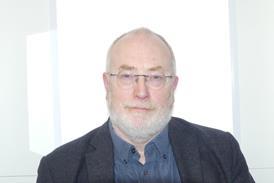- Plan launched amid concerns suicides could increase during covid-19 crisis
- Suicides across several council areas to be monitored in “real time”
- Self-harm rates will also be monitored by hubs in Manchester, Oxford and Derby
An “unprecedented” national suicide prevention plan has been launched by a government advisory group amid concerns suicides could increase during the covid-19 pandemic, HSJ can reveal.
The government’s national suicide prevention advisory group has developed the plan to address risks covid-19 could present to vulnerable people.
Chair of the group and the national adviser to the government on suicide prevention, Louis Appleby, told HSJ the plan was centred on getting far quicker access to data on suicides and self-harm episodes, which is the strongest indicator of suicide risk.
He said: “We are in unprecedented times, we haven’t got a lot of evidence on what happens to suicides rates during pandemics, so we’re having to infer from what we know generally to see where the risk might lie.
“We don’t actually know the suicide rate will go up, we can see the reasons why it might, but we don’t know it will, and obviously we’re trying to prevent that happening.
“This is a serious attempt, in some senses an unprecedented attempt to prevent a [physical health] crisis turning into a mental health crisis. There are risks in the current situation but there is also a way of dealing with those risks and there’s whole batch of experts, and agencies and front-line people, all of whom will be thinking about how to best protect vulnerable people.”
As part of early plans, Public Health England has been tasked with coordinating “real-time” notifications of suicides across several areas of the country.
National data on suicides often has a significant time lag in reporting as most deaths go through the coronial process.
However, several local authorities already collect real time data on deaths which are likely to have been suicides, through initial police notifications. Under the plans, some of these areas will report data to PHE centrally. However, it has not yet been agreed how regularly they will submit.
Self-harm rates will also be monitored. Professor Appleby continued: “Self-harm is the strongest indicator of suicide risk. What we have is three centres across the country, in Manchester, Oxford and Derby, where they report self-harm figures. Normally this takes quite a while to report, as it is cleaned and closely analysed. We are planning for them be able to provide us with earlier sight of the data.”
The national group will also be asking mental health trusts and charity the Samaritans for “soft intelligence”, on where risks are likely to be and what is happening on the front-line, along with a “rapid review” function looking at any evidence published around the world. This is being led by academics from University of Bristol.
Any evidence and data collected and published will be disseminated locally by the National Confidential Suicide Inquiry to all NHS mental health trusts and sustainability and transformation partnerships.
The Department of Health and Social Care was approached for comment.
Source
Interview
Source Date
17 April 2020



























14 Readers' comments